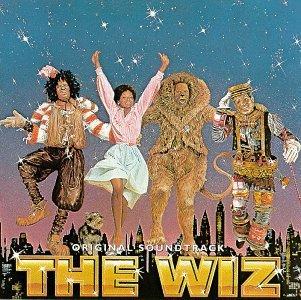First staged on Broadway in 1975, “The Wiz,” an all-black re-imagining of “The Wizard of Oz,” was a bonafide hit. It was, and is, a landmark of black theatrical culture, paving the way for later hits such as “Hamilton.” In 1978, “The Wiz” adapted for its screen debut. It was at this point that the train careened off the tracks and exploded.
Directed by Sidney Lumet, a prolific filmmaker who was about as suited to adapt this project as a pile of mulch, “The Wiz” is genuinely depressing in how awful it is. This film brought together an all-star cast of black performers, featuring Diana Ross, Richard Pryor, Nipsey Russell and a young Michael Jackson, then spent a couple hours wasting their talents.
Ross was well into her thirties when “The Wiz” came out, and she was a superstar. So naturally, she was cast in the role of young, frightened ingenue Dorothy. Ross has a nice voice, and her singing is one of the few non-terrible elements in this travesty. But she is wildly woefully miscast.
If you will cast your minds back to the halcyon days of 1939, you may remember that Judy Garland was not 34 when she first played the role of Dorothy. “The Wiz” decided to modernize the role of Dorothy by casting Ross as a shy kindergarten teacher whose aunt is pushing her to get a higher paid position.
The changes the screenplay makes to the story are just baffling. While the stage version of “The Wiz” was markedly different from the original film, it kept the general story and feel intact. Dorothy was still a young girl living on a farm in Kansas, Oz was still a magical wonderland and the tone was generally upbeat.
This screenplay, penned by “Batman and Robin” auteur Joel Schumacher himself, feels sour instead. Oz is a depressing concrete jungle, which raises some troubling questions about two white men overseeing this ostensibly black production. The film is stuffed with aspirations to social commentary, with gags about characters not being able to get a cab among other things.
But the cinematography and set design are the worst crimes. “Ease On Down the Road,” the most famous song from the musical, is a jubilant anthem that you would think be a centerpiece of the film. Instead, the entire sequence is one shot of the backs of Diana Ross and Michael Jackson, with the camera sitting roughly 50 yards away on a massive, mostly empty set.
This is a theme throughout the film, especially in the musical numbers. “Ease On Down the Road” is the most tragic since it is the best tune that the movie didn’t cut. Emerald City gets this treatment too, with a light-up structure that is allegedly an analog for the World Trade Center sitting in the middle of a massive black void. If the set designer on this film ever worked again, I’d be surprised.
On the long list of bad film adaptations, “The Wiz” has to rank pretty high. Honestly, it’s barely even an adaptation. It brings over character names, songs and some of the bones of the story, but it changes so much that it’s all but unrecognizable. Lumet is rightly remembered as one of the great auteurs, but this was a disaster.


